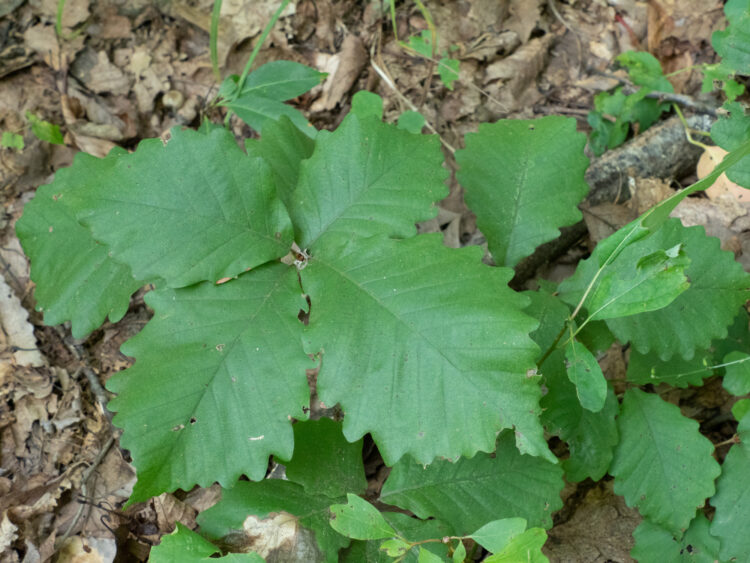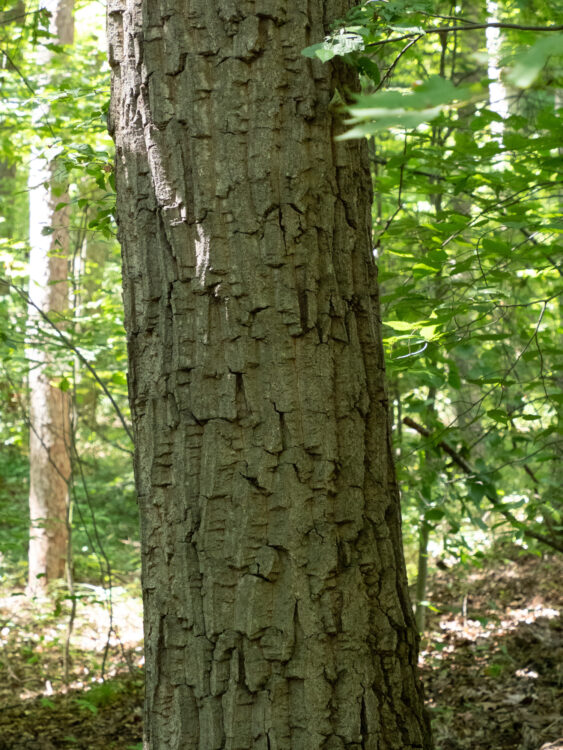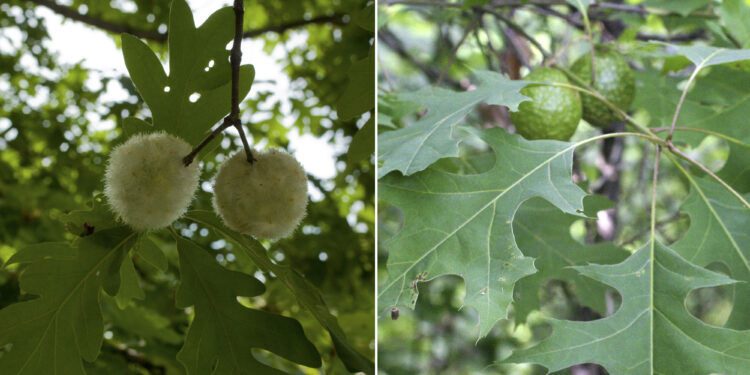chesnut oak (Quercus montana)
Fagaceae, the beech family
How to recognize chestnut oak. As a typical oak, chestnut oak has leaves that are alternate in arrangement, simple in complexity, with lobed margins. These leaves are somewhat crowded towards the tips of the branches. As a member of the white oak group the leaf lobes do not end in bristle tips, and the acorns mature in just one year. This species has numerous small shallow lobes (so small in fact that some sources refer to them as deep teeth rather than shallow lobes) that are blunt, not pointed as in the very similar chinquapin oak that we encounter on calcareous sites.

Chestnut oak leaves are very shallowly lobed,
and the lobes are blunt.
(Compare with chinquapin oak.)
Bark. The bark is dark and, in older trees, deeply furrowed.

Chestnut oak bark is deeply furrowed.
Where to find chestnut oak. E. Lucy Braun, in The Woody Plants of Ohio (1961, 1989; The Ohio State University Press) tells us “Chestnut oak is the dominant tree of the oak or shale barrens of southerly and westerly slopes on the Ohio Black Shale; in such situations, it is a medium-sized tree of irregular form. On more mesic sites, it develops into a large tree with straight trunk, and mingles with other tree species. The heavy and very slowly decaying leaf-litter of pure or almost pure stands of thus oak is responsible for the sparse ground vegetation. The acorns are large (2.5-4.5 or 4 cm. long), usually more than twice the size of those of Q. muehlenbergii wirth which it is sometimes confused, and the teeth are rounded instead of pointed; the bark is dark and, in old trees, deeply furrowed.”
Scanned Image from an Old Book
(Flora of West Virginia, by P.D. Strausbaugh and Earl L. Core)

Chestnut oak is lower left.
Compare with chinquapin, upper right.
Ooh ooh. I have a question!
How are oaks superlative with respect to insect ecology?
No other group of plants has more insect galls than the oaks.
Well what the heck are insect galls?
Insect galls are growths that develop on specific parts of plants in reaction to the feeding stimulus of insects. They house their immature stages. They appear as enlargements or swellings of stems or leaves. Some are rather intricate, with an anatomy and appearance specific to the gall former. Many oak galls are caused by tiny wasps.

Galls on white oak (left) and red oak (right).
These are caused by cynipid wasps.
